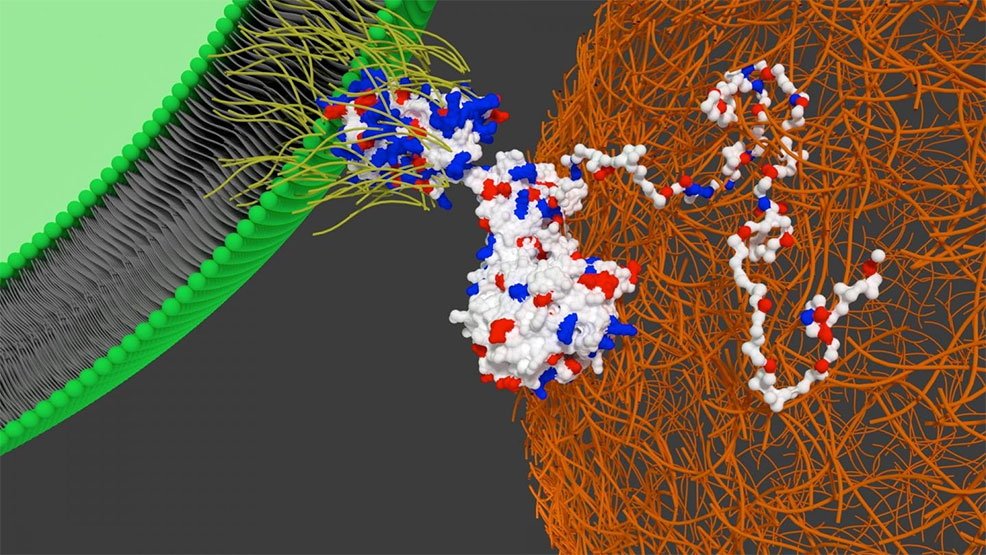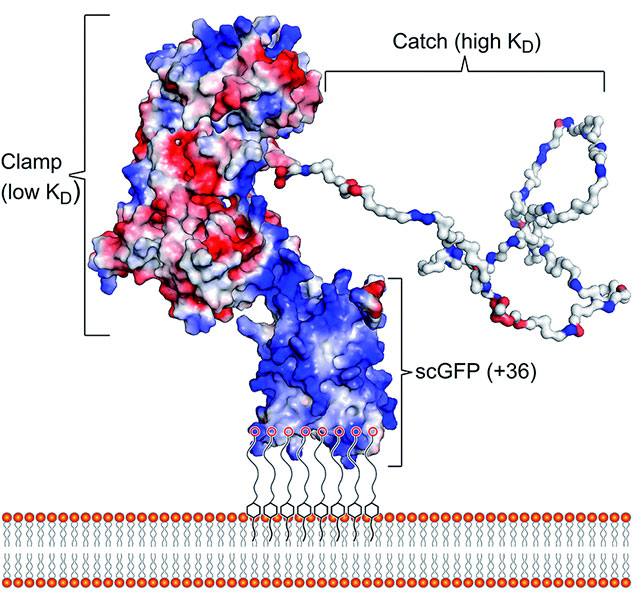
4th July 2019 New way to direct stem cells to heart tissue Researchers from the University of Bristol have reported a new way to direct stem cells to heart tissue, using a designer adhesin protein. The breakthrough, published in the open access journal Chemical Science, could radically improve the treatment for cardiovascular disease, which causes 29% of all deaths worldwide. In recent years, trials using stem cells – grown from a patient or donor and injected into the patient's heart to regenerate damaged tissue – have produced promising results. However, while these next generation cell therapies are on the horizon, a number of challenges associated with the distribution of stem cells have remained. High blood flow in the heart combined with 'tissue sinks', which circulating cells encounter, means the majority of stem cells end up in the lungs and spleen. Now, researchers from Bristol's School of Cellular and Molecular Medicine have found a way to overcome this, by modifying stem cells with a special protein so they 'home' to heart tissue.
"With regenerative cell therapies, where you are trying to treat someone after a heart attack, the cells rarely go to where you want them to go. Our aim is to use this technology to re-engineer the membrane of cells, so that when they're injected, they'll home to specific tissues of our choice," explains Dr Adam Perriman, lead author, Associate Professor in Biomaterials and founder of the cell therapy technology company, CytoSeek. "We know that some bacterial cells contain properties that enable them to detect and 'home' to diseased tissue. For example, the oral bacterial found in our mouths can occasionally cause strep throat. If it enters the blood stream, it can 'home' to damaged tissue in the heart, causing infective endocarditis. Our aim was to replicate the homing ability of bacteria cells and apply it to stem cells." The team looked at how bacterial cells use a protein called an adhesin to 'home' to heart tissue. Using this theory, the researchers were able to produce an artificial cell membrane binding version of the adhesin, which could be 'painted' on the outside of the stem cells. In an animal model, the team were able to demonstrate that this new cell modification technique worked by directing stem cells to the heart in a mouse. "Our findings demonstrate that the cardiac homing properties of infectious bacteria can be transferred to human stem cells," Dr Perriman added. "Significantly, we show in a mouse model that the designer adhesin protein spontaneously inserts into the plasma membrane of the stem cells with no cytotoxity, and then directs the modified cells to the heart after transplant. To our knowledge, this is the first time that the targeting properties of infectious bacteria have been transferred to mammalian cells. "This new technique carries enormous potential for the millions of people currently living with heart disease."
Credit: University of Bristol / Chemical Science
Comments »
If you enjoyed this article, please consider sharing it:
|








